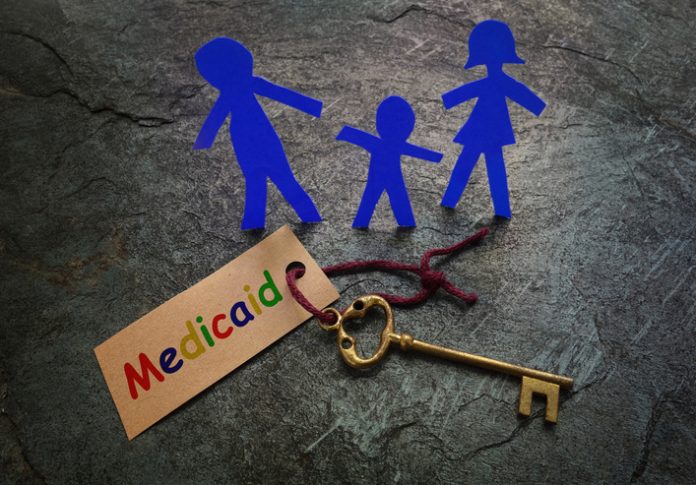Medicaid is intended to be a safety net for low-income patients.
Here’s the good news. Only 1 percent of Americans are (1) lawful U.S. residents, (2) uninsured, and (3) lack access to subsidized health insurance. That fact comes from health economist Brian Blase, based on a recent Congressional Budget Office (CBO) report.
Currently, 24.3 million individuals in the United States are uninsured. But aside from those who are here illegally, virtually everyone else is eligible for enrollment in Medicaid, Medicare, or private plans, such as those offered in the Obamacare exchanges or by employers.
Medicaid enrollment is free, Obamacare insurance is heavily subsidized, and almost all employer-provided insurance is required to be “affordable.” So arguably, we have achieved “universal coverage,” or something very close to it.
Here’s the bad news. Almost all the increase in health insurance coverage under Obamacare has been the result of an expansion of Medicaid. When Obamacare was being debated, its advocates never said they planned to insure the uninsured with Medicaid. But that is what happened. What’s wrong with that? Two things.
Medicaid Merry-Go-Round
First, since Medicaid pays the lowest provider fees, Medicaid enrollees are the last patients doctors want to see. Almost a third of doctors won’t take any new Medicaid patients at all. Second, since eligibility for Medicaid is determined by income, people find they are enrolled and disenrolled frequently over the space of a few years.
Families at the bottom of the income ladder find that as their income goes up and down and as their job opportunities ebb and flow, they bounce back and forth among eligibility for Medicaid, eligibility for subsidized insurance in the Obamacare exchanges, eligibility for employer-provided coverage, and sometimes eligibility for none of the above. No continuity of health insurance usually means no continuity of medical care.
Going by the raw numbers, the CBO tells us the number of people with private insurance has increased by 1.6 million over the last decade. But remember, Obamacare came into being as America was recovering from the Great Recession. So, even without any change in health policy, we would expect that as more people found jobs, more people would have been privately insured. On balance, there is little reason to think Obamacare has increased the number of people with private coverage at all.
There has been a major change in the kind of private insurance people have, however. An increase in the number of people with coverage purchased in the Obamacare exchanges (where the average government subsidy is about $6,000), has been offset by a decrease in employer-provided coverage (where the average subsidy is $2,170).
Aside from needlessly adding to the federal deficit, what’s wrong with that?
Medicaid with High Deductibles
First, the typical plan offered in the exchanges pays provider rates that are not much more than what Medicaid pays. As a result, these plans look like Medicaid with a high deductible. Second, the deductibles are really high. In Dallas, Texas, for example, an average-income family of four getting insurance in the exchange pays no premium at all. But if a family member gets sick, the out-of-pocket exposure is $9,100. If two family members get sick the exposure is $18,200. And that’s every year.
At lower income levels, the children may qualify for Medicaid and the adults may qualify for subsidies that reduce their out-of-pocket costs. But these freebies from government are far from “free.” The benefits phase out quickly as income rises. So, if the family earns an additional $1,000 in wages, they can lose several times that amount through higher health care costs.
Another problem is that enrollees in Obamacare exchange plans often lack access to the best doctors and hospitals. Our Dallas family, for example, has no access to the city’s Baylor Medical Center or UT Southwestern Medical Center, or MD Anderson Cancer Center in Houston.
There are numerous papers like this demonstrating that despite the appearance of universal coverage, we are doing a very poor job of providing care to those at the bottom of the income ladder. Careful studies have determined Medicaid itself is a poor health insurance plan.
In the most meticulous study ever done of the matter, researchers discovered Medicaid in Oregon had no effect on the physical health of enrollees, and that, after enrollment, emergency room traffic actually increased. A subsequent study found Medicaid enrollees value their participation in Medicaid as little as 20 cents on the dollar.
Congress’ Rescue Attempt
It’s not clear that Obamacare’s exchange insurance is much better. One reason Congress in recent years added on an extra tier of subsidies for higher-income families is that the unsubsidized part of the individual market was in a death spiral. It seems very few people are willing to pay the market price for what Obamacare has to offer.
That said, there are pockets of excellence, and they exist within the safety net. (see related article, opposite page)
Boston University economist Laurence Kotlikoff and I have advocated replacing Medicaid, the Obamacare exchanges, and other safety net programs with a system that functions like Medicare Advantage. Risk-adjusted payments would be made to competing organizations. The ones that succeed in producing high-quality, efficient care would be financially rewarded. Those that fail in this regard would be penalized with financial losses.
The first step toward fixing our tattered safety net would be for the health policy community to recognize the achievement of near-universal health insurance coverage has not created universal access to high-quality care.
John C. Goodman, Ph.D. (johngoodman@goodmaninstitute.org) is co-publisher of Health Care News and president and founder of the Goodman Institute for Public Policy Research. A version of this article appeared in Forbes on November 26, 2023. Reprinted with permission.




















